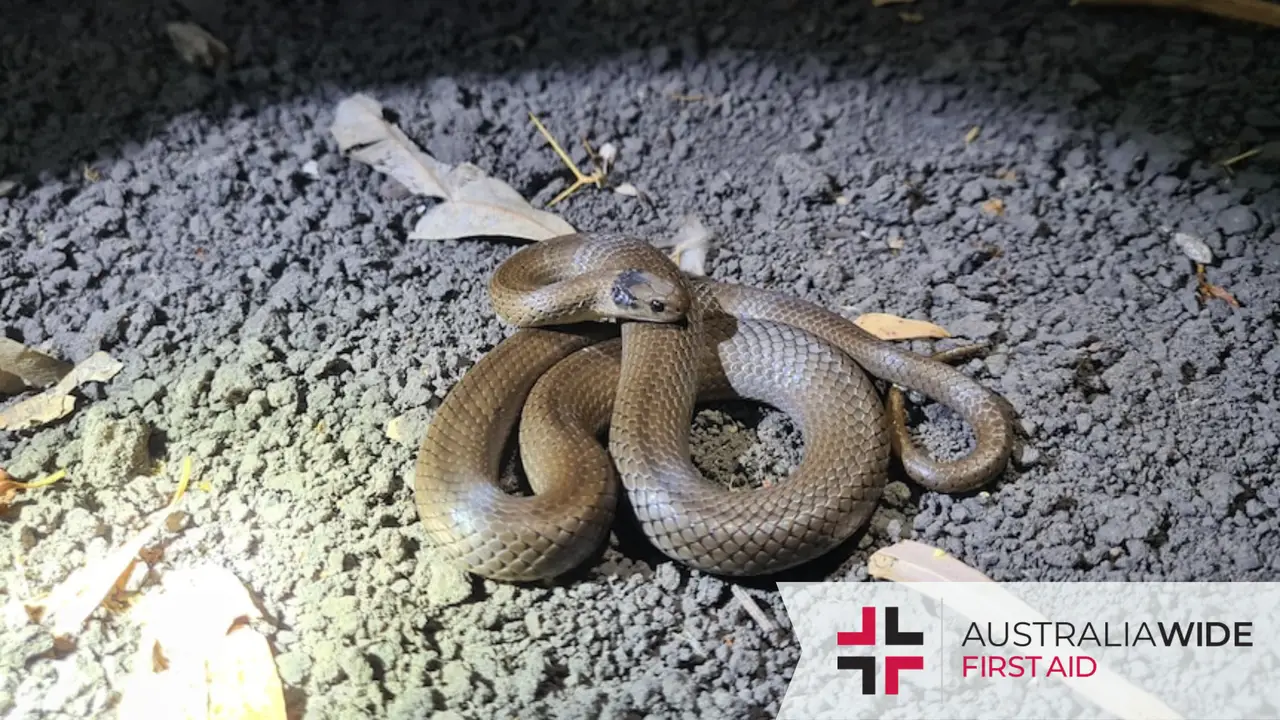All About the Little-Known Grey Snake


The Grey snake is one of the most elusive members of the Elapidae snake family.
As they tend to forage on the ground between dusk and dawn, they have only been witnessed a handful of times over the past 65 years.
Like other Elapids, such as the Eastern brown snake, the Grey snake is venomous. In this article, we will uncover all the mysteries of the Grey snake and teach you how to manage their bites.
To learn more about identifying, treating, and preventing snake bites, enrol in one of our general or childcare first aid courses.
We have training locations in every state, capital city, and major town throughout Australia - head to our website to enrol at a training location near you today.
The Grey snake (Hemiaspis damelii) has the following identifying characteristics:
Though not much is known about the Grey snake's distribution, existing records indicate they are commonly found in south-eastern Queensland and north-central New South Wales.
Small populations have also been found in south-western New South Wales and north-eastern South Australia.
They tend to shelter in cracking clay soils and under rocks, logs, and other debris in woodlands and dry sclerophyll forests where water bodies are present.
The Grey snake is mostly active during the night. They use this time to hunt and feed on frogs and skinks.
They are currently listed as endangered under the Environment Protection and Biodiversity Conservation Act 1999.
There are several factors contributing to their population decline:
The Grey snake has fairly mild venom that is unlikely to cause human fatalities.
However, their venom contains procoagulants and can cause local pain and swelling.
All snake bites should be treated as a medical emergency:
It is important to remember, snakes will never go out of their way to attack you. The best way to avoid a snake bite is to refrain from approaching, capturing, or killing any snakes at home or in the wild. If you need a snake relocated from your property, contact a professional snake catcher.
For hands-on experience with identifying, treating, and preventing snake bites, enrol in one of our general of childcare first aid courses.
We have training locations in every state, capital city, and major town throughout Australia.
Head to our website to find and enrol in a training location near you today.

March 11, 2025
Darwin, the tropical capital of Australia’s Northern Territory, is home to a rich diversity of wildlife - including an impressive array of spiders. From the sprawling webs of golden orb-weavers to the cryptic camouflage of trapdoor spiders, these arachnids play a vital role in the local ecosystem. While some may inspire fear, the majority are harmless and even beneficial, helping to control insect populations.

September 4, 2024
Cat bites, while often underestimated, can lead to serious health complications if not treated promptly and properly. Cats' mouths harbour a variety of bacteria that can cause infections in humans.

April 1, 2024
Encounters with wildlife can often be thrilling, but when it comes to the creature known as the drop bear, the experience can quickly turn dangerous. A sharp increase in recent attacks prompts the need for understanding proper first aid procedures in case of an attack.